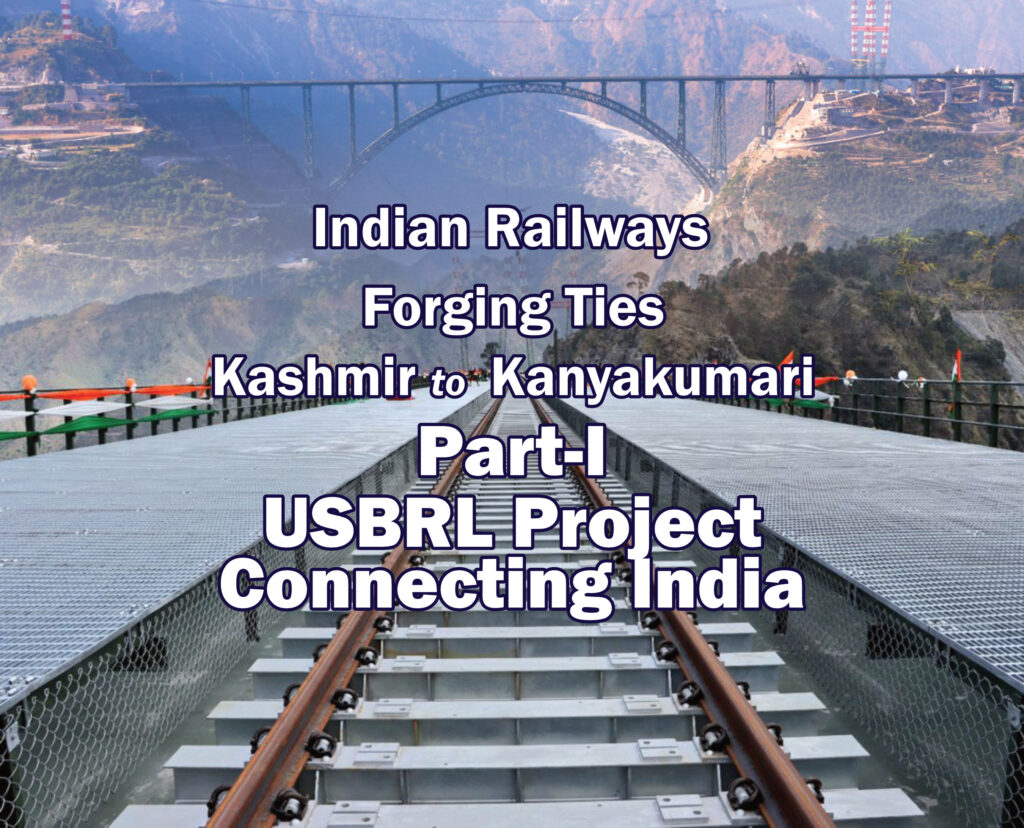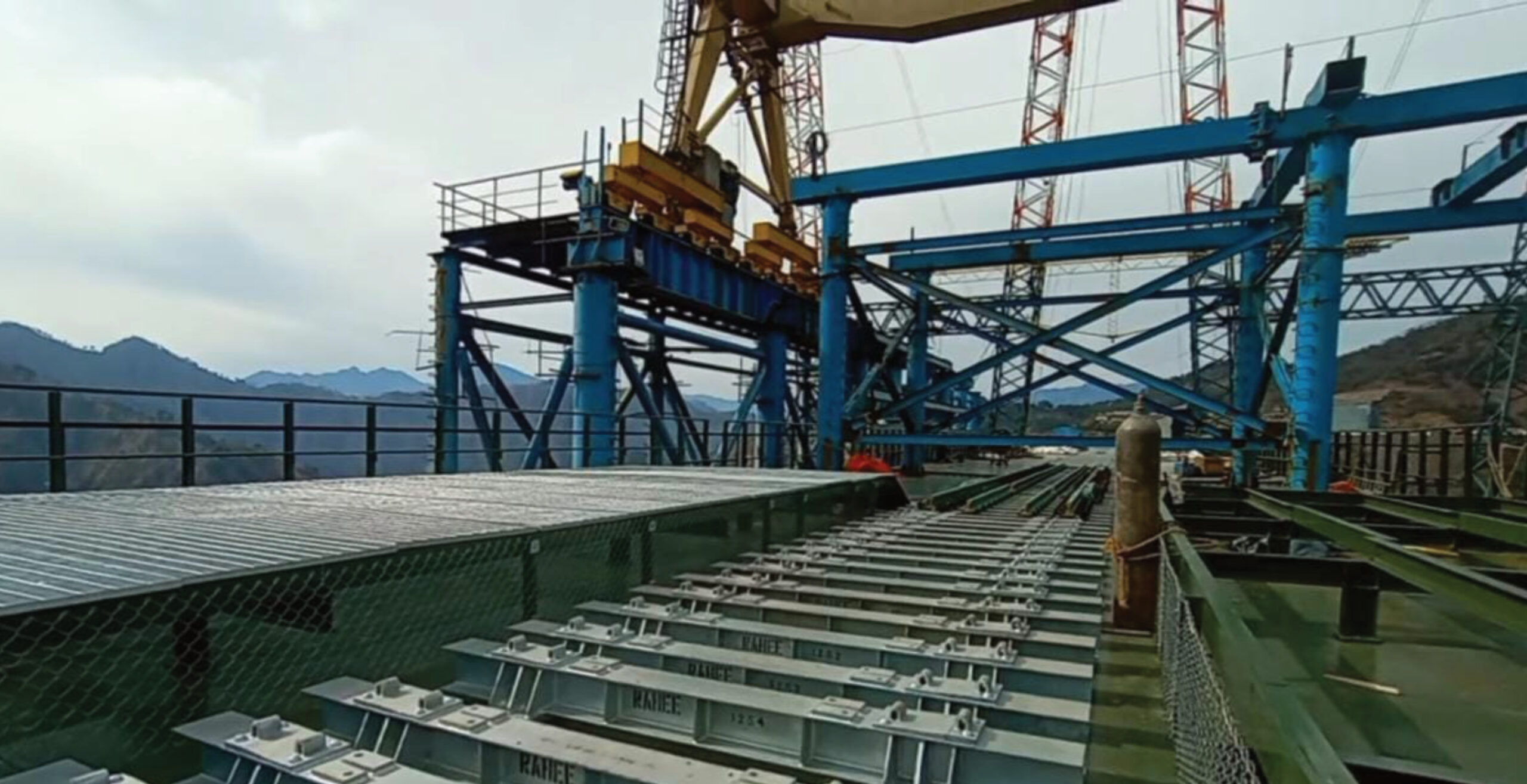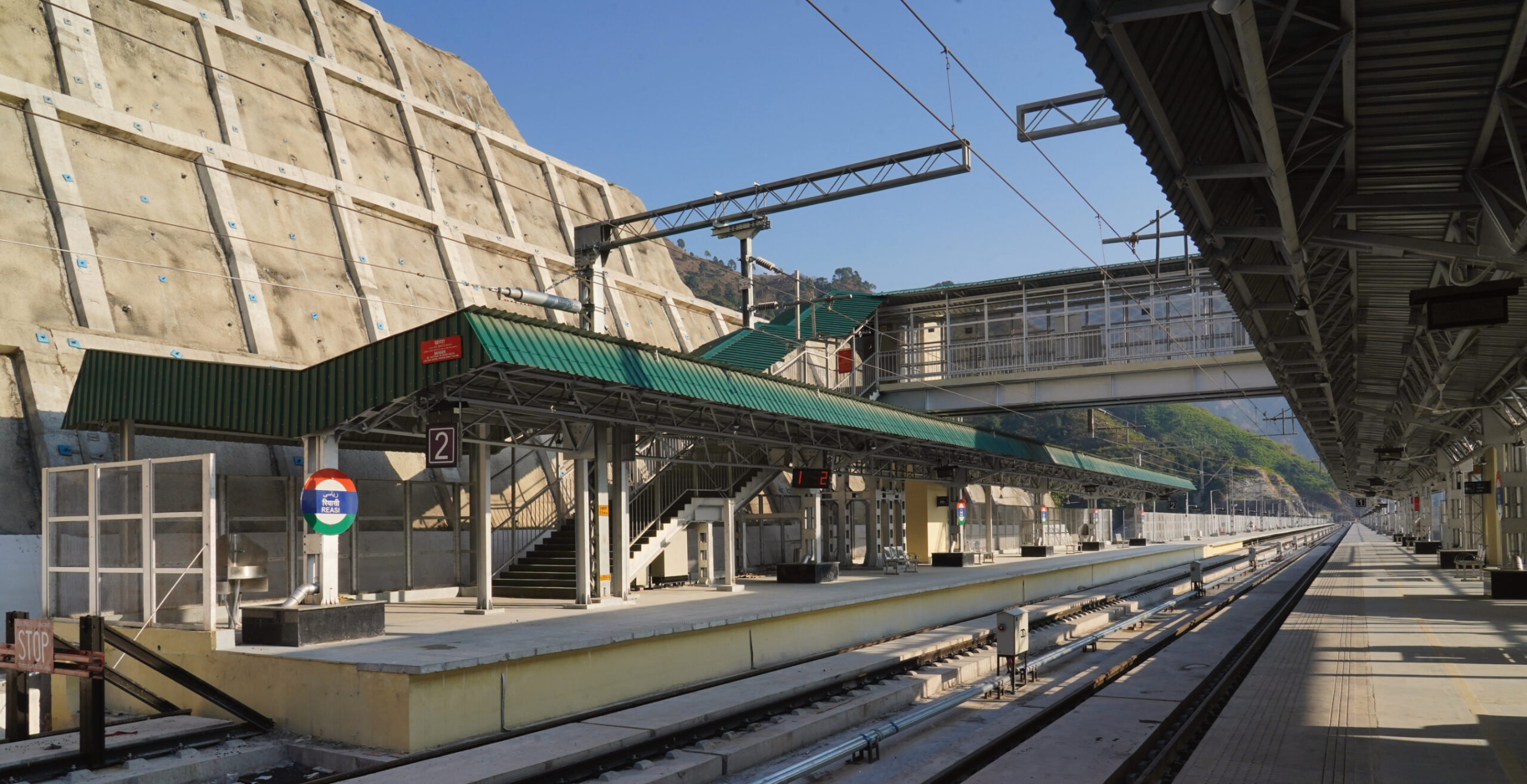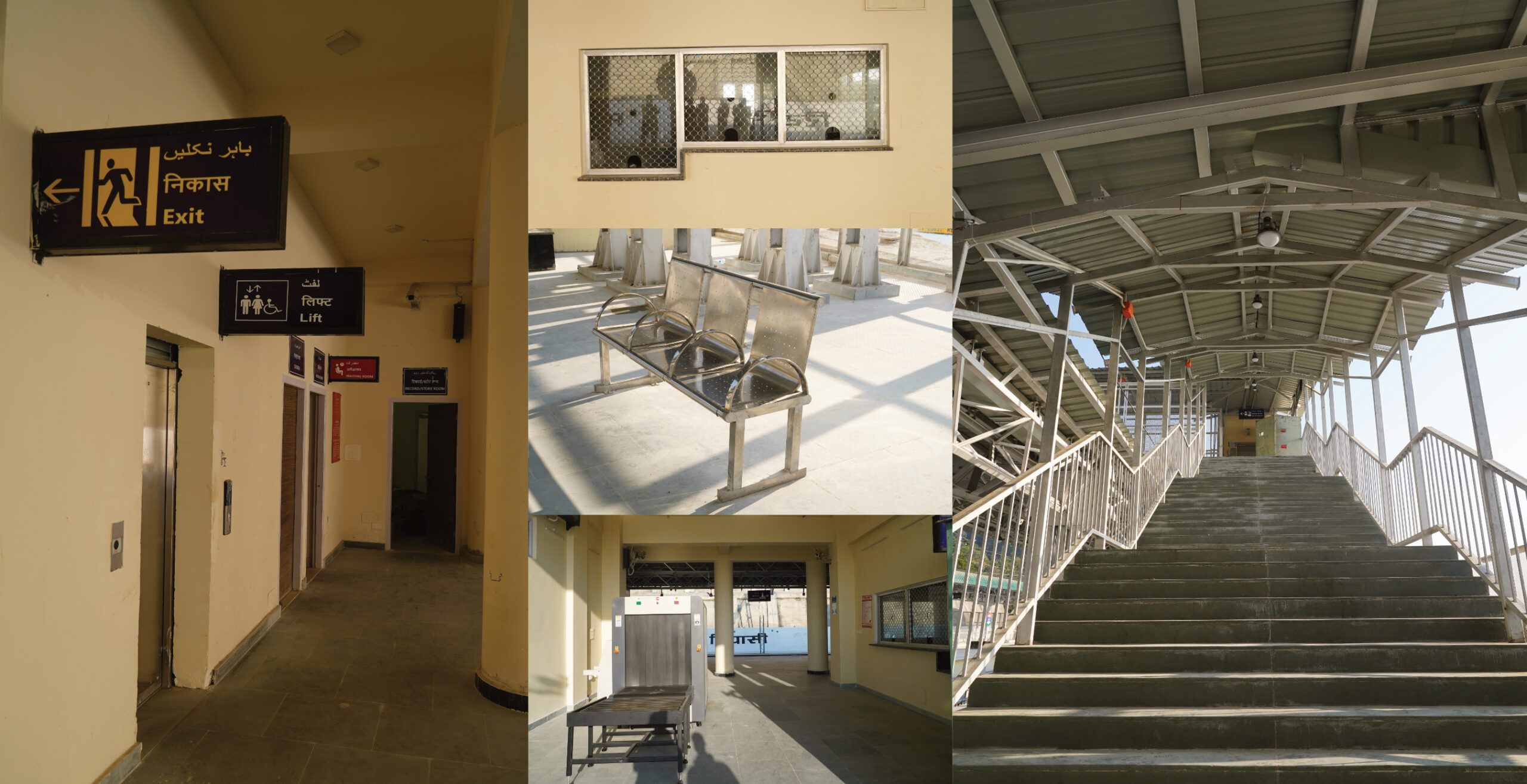Having endured perseverance spread over three decades, the Jammu and Kashmir region of the country is finally poised to connect itself up to Kanyakumari with the work on the Udhampur-Srinagar-Baramula Rail Link (USBRL) Project completed. The scenic beauty of the valley, its willow, walnut, wooden engravings, pashmina and other trade valuables are now all set to make their mark across the country as traders and tourists will frequent the place leading to a propelled economy—courtesy Indian Railways.
The USBRL Project—dubbed the lifeline of connectivity in the Jammu and Kashmir region—has seen two major components creating records. The Indian Railways has established itself as a global pioneer in the art of engineering in the connectivity sector by dedicating the Chenab Bridge—the world’s tallest railway arch bridge, and the Anji Bridge—India’s first cable-stayed railway bridge—to the nation.
The Voices bring glimpses of the iconic structures through this three-part series – a trilogy dedicated to engineering marvels on USBRL tract.
The Idea of Inclusive Kashmir
The idea of inclusive Kashmir—connecting it with the common man’s lifeline—through railways was envisaged in 1983. The Udhampur-Srinagar-Baramulla Rail link (USBRL) project was sanctioned in 1999. The three decades saga of Indian masterminds’ battle to connect the snow-capped, pristine valley with the rest of India has come to fruition. It will see a logical conclusion shortly. This Rs. 41,000 Crore mega rail project meanders across rivers, ravines and soaring high mountains stretching over a length of 272 km.
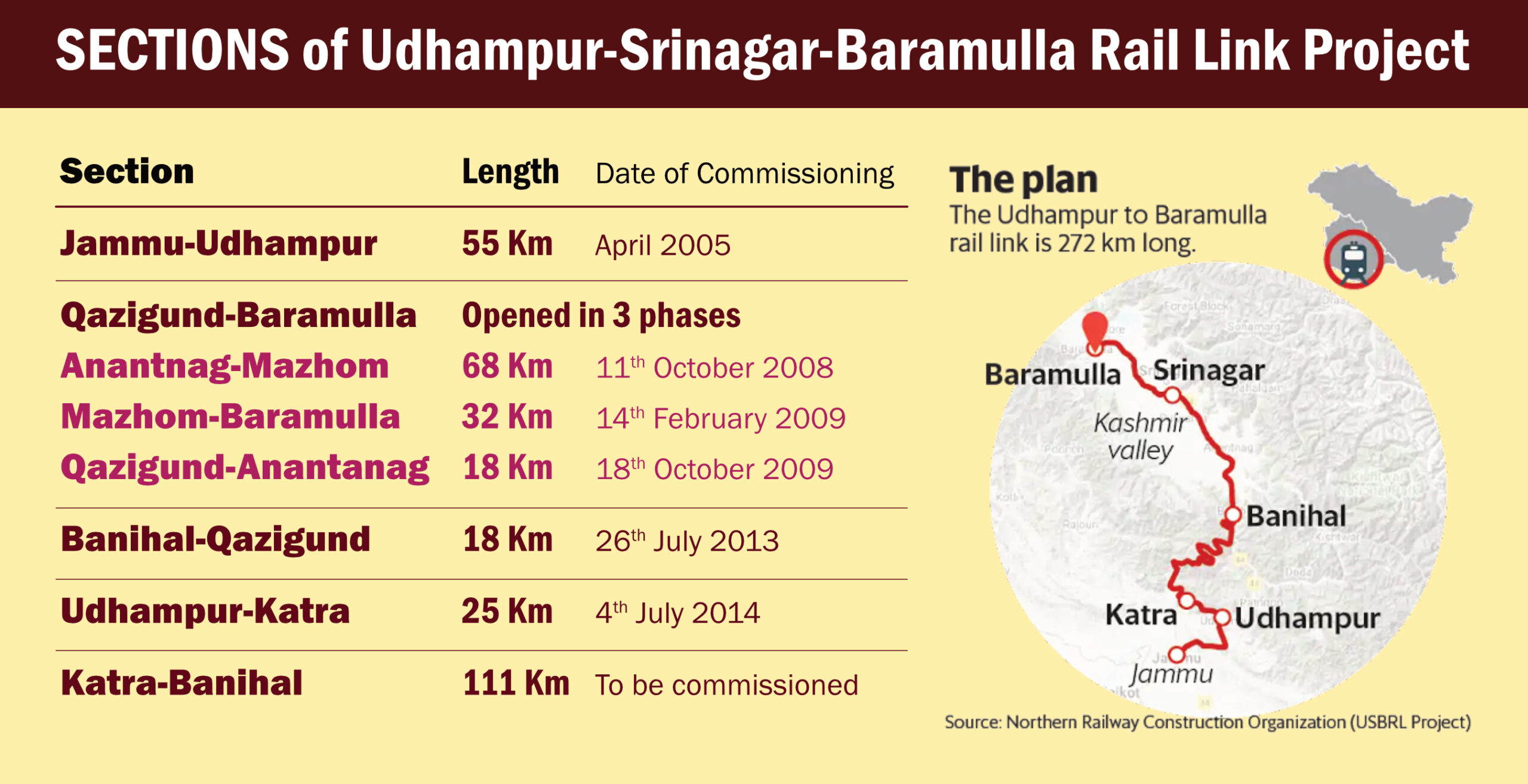
Challenges for the USBRL
The main challenges confronted during the construction were the topography terrain and deep riverine gorges between the Katra-Banihal Section.
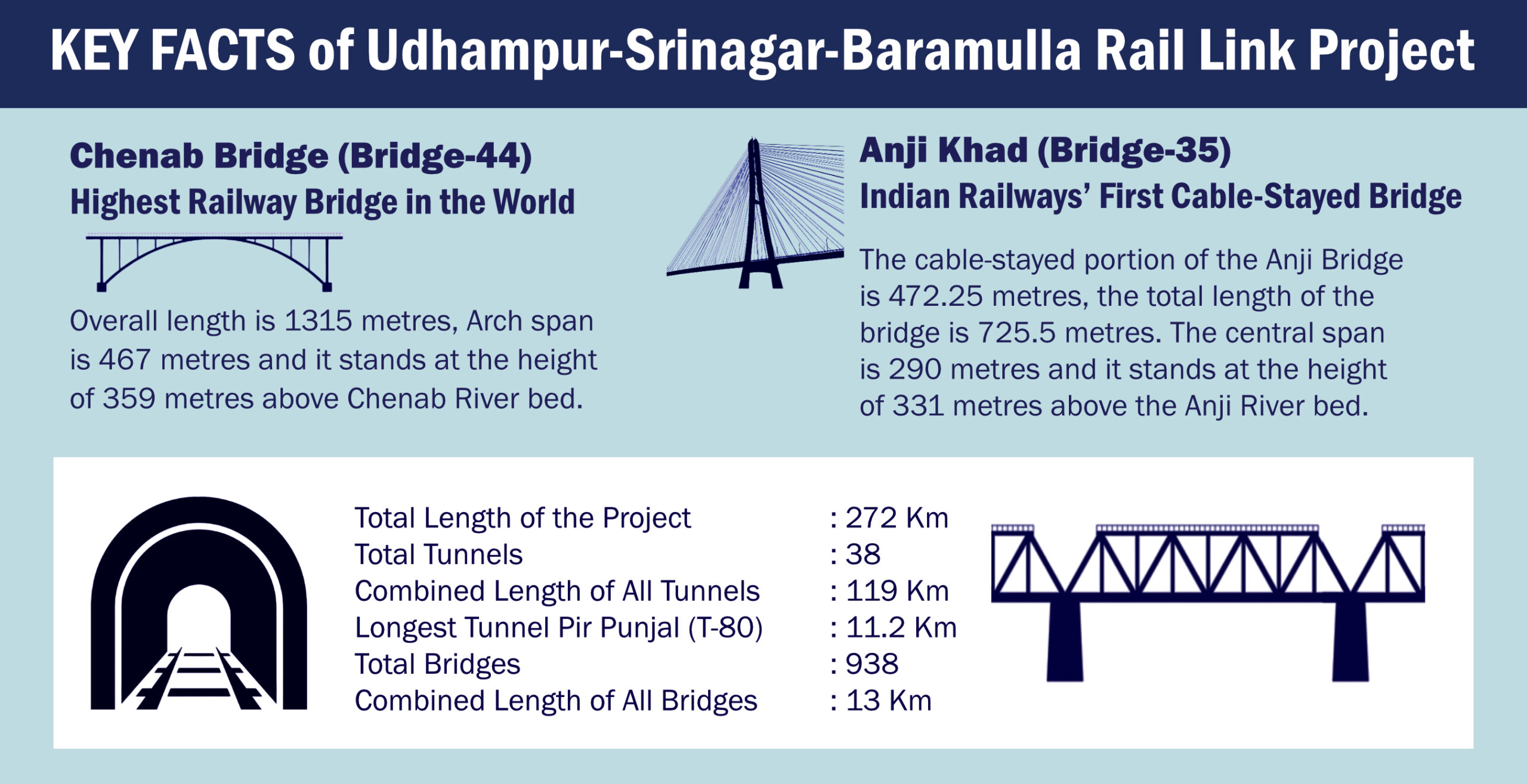
Katra-Udhampur, Southern Part (Jammu)
The USBRL Project was accorded National Project status in 2002. It took 21 years after its foundation was laid to construct the Jammu-Udhampur 55 Km Rail Line (in the southern part of Kashmir). The Katra-Udhampur Section saw light after 10 years with the inauguration of Katra Railway Station in 2014, giving devotees easy access to pay pilgrimage to Mata Vaishno Devi in Katra.
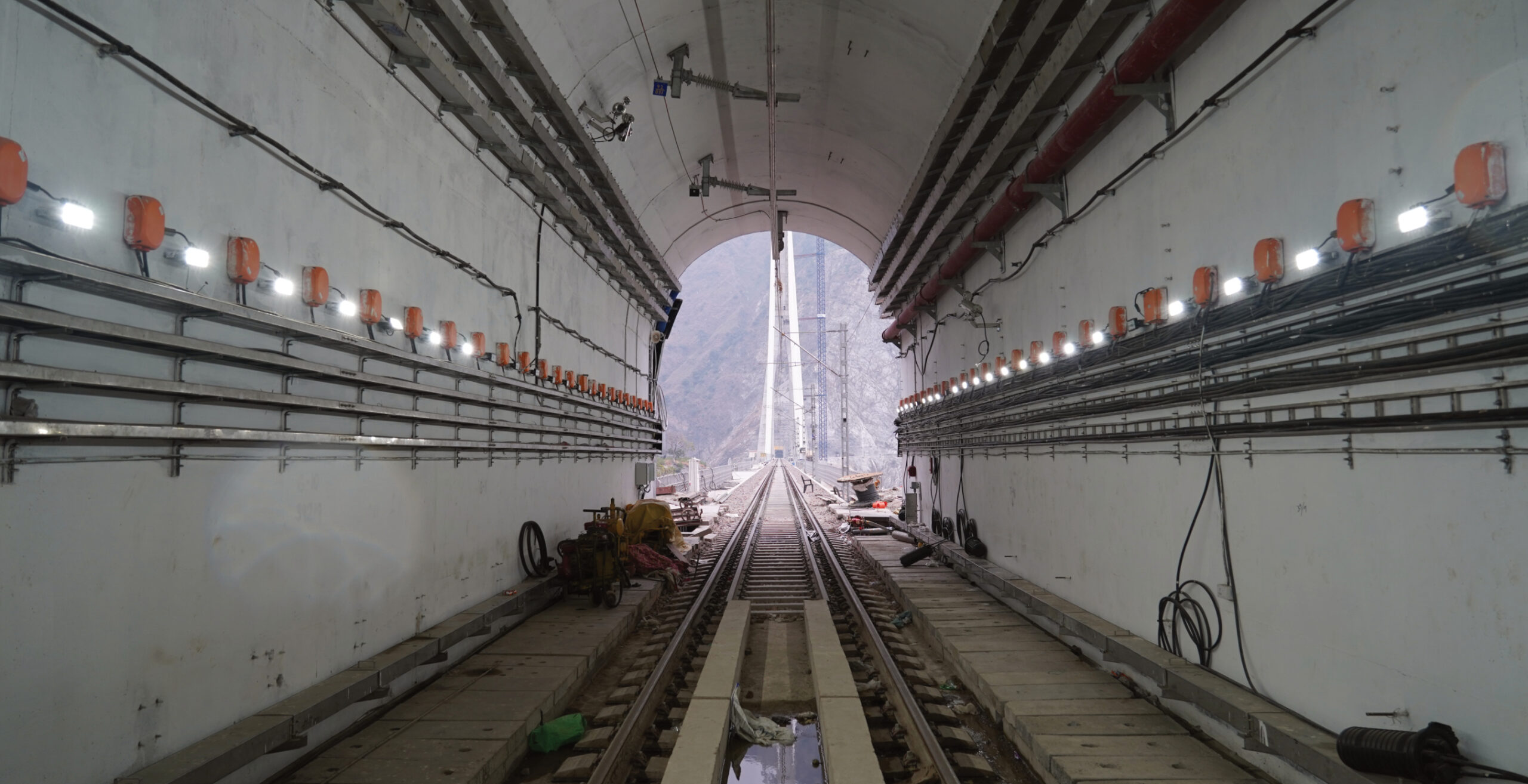
Banihal-Baramulla, Northern Part (Kashmir)
The Banihal-Baramulla (the endpoint and northern tip of the project and Kashmir) was completed in 2013. The iconic moment in the history of Indian Railways is the completion of the 11.2 Km Pir Panjal Tunnel connecting the Banihal in Jammu and the Qazigund in Kashmir.
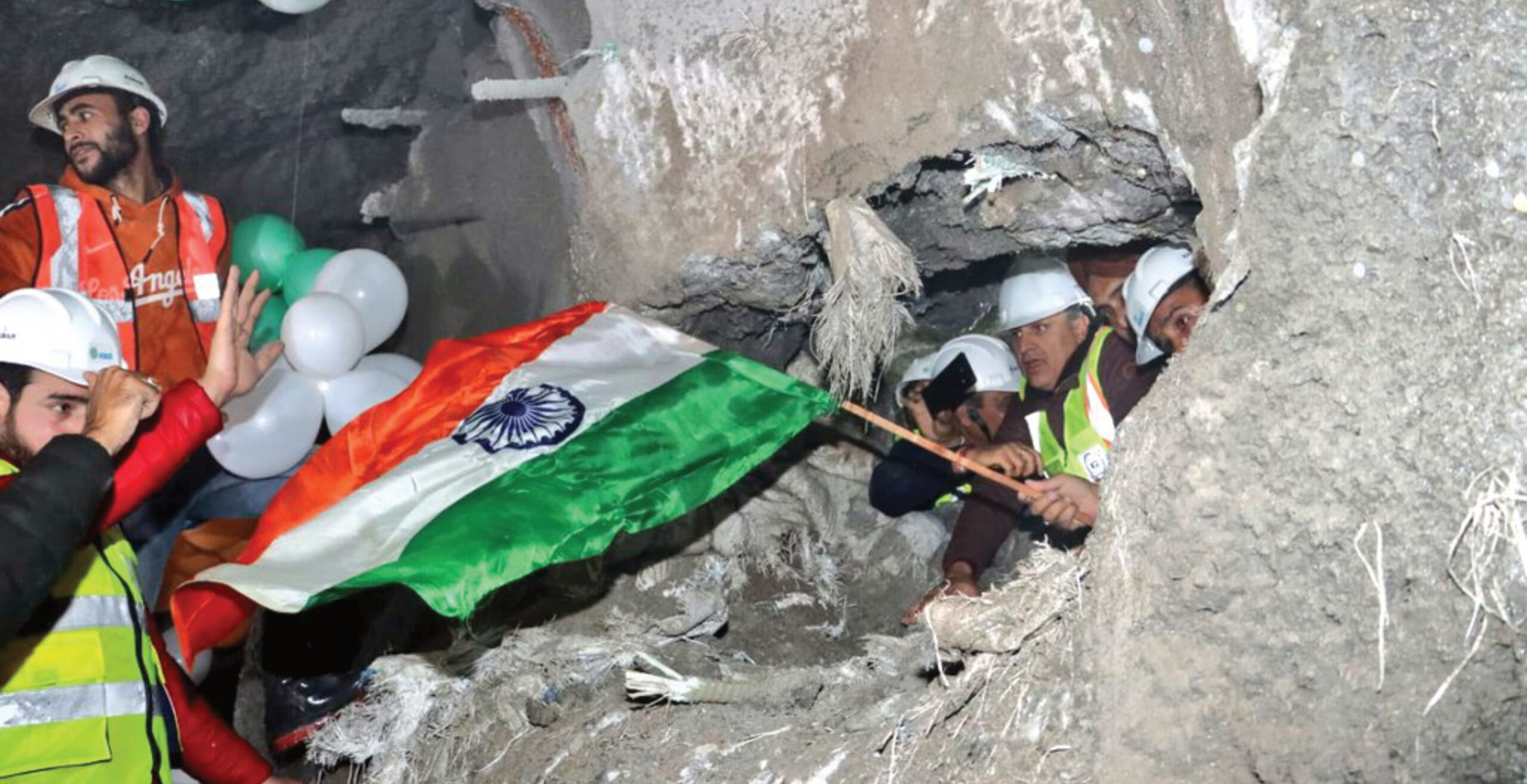
Daunting Task—Katra-Banihal Valley
The Katra-Banihal Valley stretch has been an extremely challenging 111 Km section during construction. Riddled with a shear zone and high water inflow, its T-33 tunnel provides a reliable all-weather transportation system. This challenge paved the way for the two iconic marvel bridges showcasing India’s engineering prowess to the world.

Anji Khad—India’s First Cable-Stayed Railway Bridge
Anji Khad Bridge connecting Katra with Reasi is the first cable-stayed railway bridge on Indian Railways. With a gigantic pylon of 193 metres anchoring 96 cables. This bridge features a deck 331 metres above the riverbed.
Sujoy Kumar, Dy. Chief Engineer (Bridges) Konkan Railways, the technical expert, said, “Due to the importance of the bridge, a large number of sensors are placed on it to monitor the bridge’s structural health during service. Because of the long span and the deep valley, tests in the Wind Tunnel were conducted, to evaluate the aerodynamic actions (static aerodynamic coefficients) and to investigate aero elastic phenomena (galloping, fluttering and vortex shedding).”
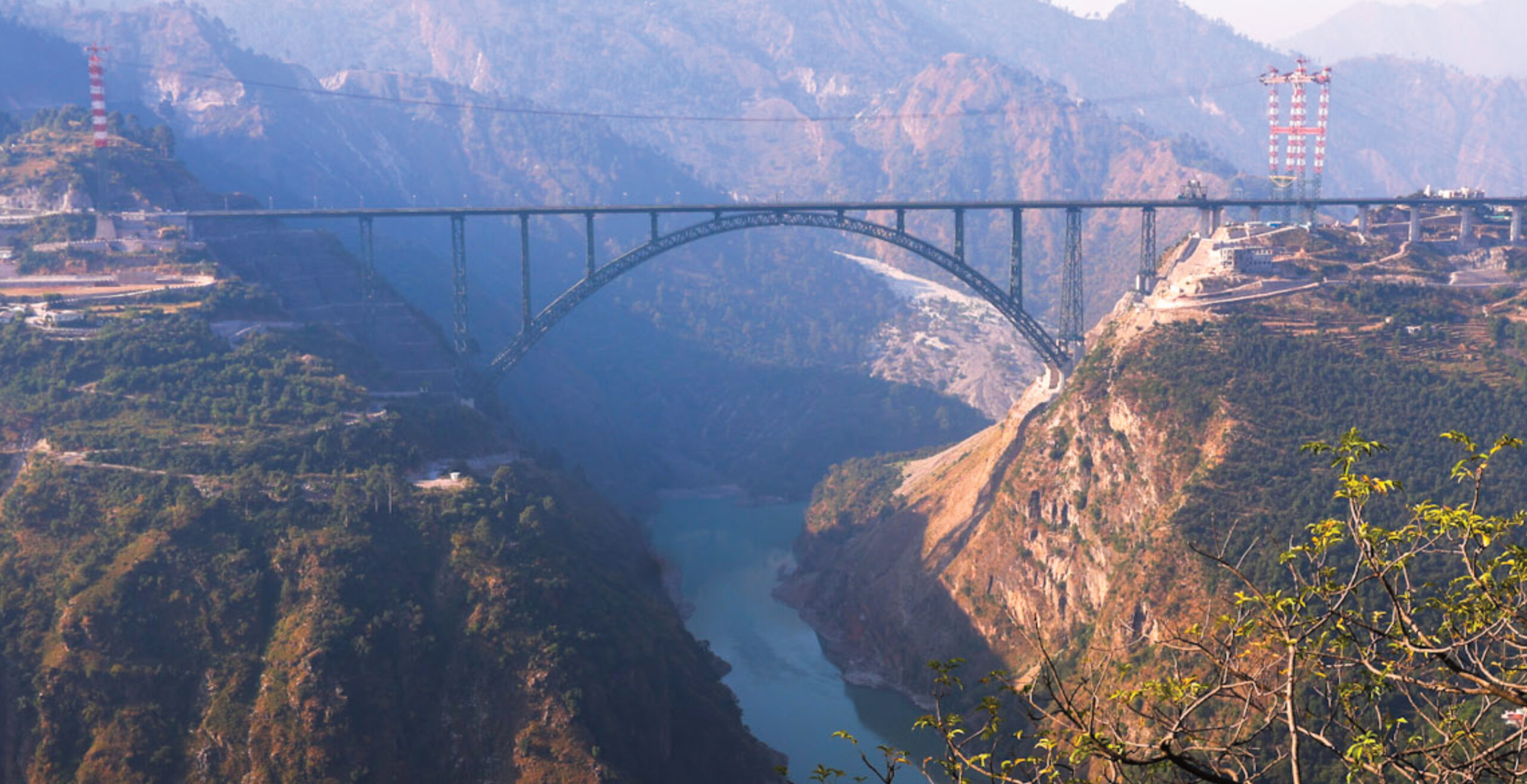
Chenab Bridge—World’s Highest Bridge
The 1.32 Km Chenab Bridge, the highest bridge in the world, was built at 359 metres from the under-flowing river. The gigantic arch supporting the railway track meeting the golden joint at the centre is the best place to view the valley in the divine glow.
Project In-Charge (Chenab), R R Mallik told The Voices that the construction of this bridge was undertaken by Konkan Railway Corporation Ltd. at a cost of Rs.1486 Crore. It was tough terrain to work on, especially given that the deck is 359 m above the river bed; with the main arch spanning 467 metre (linear) and 550 metre (curvilinear).
He further added that the foundation of the arch is about the size of half a football field. It has a 120-year lifespan and can resist winds up to 266 kmph at this altitude. The train’s speed on the bridge can be up to 100 kmph. Sensors are placed on the bridge to monitor the load and stress due to temperature variations continuously.
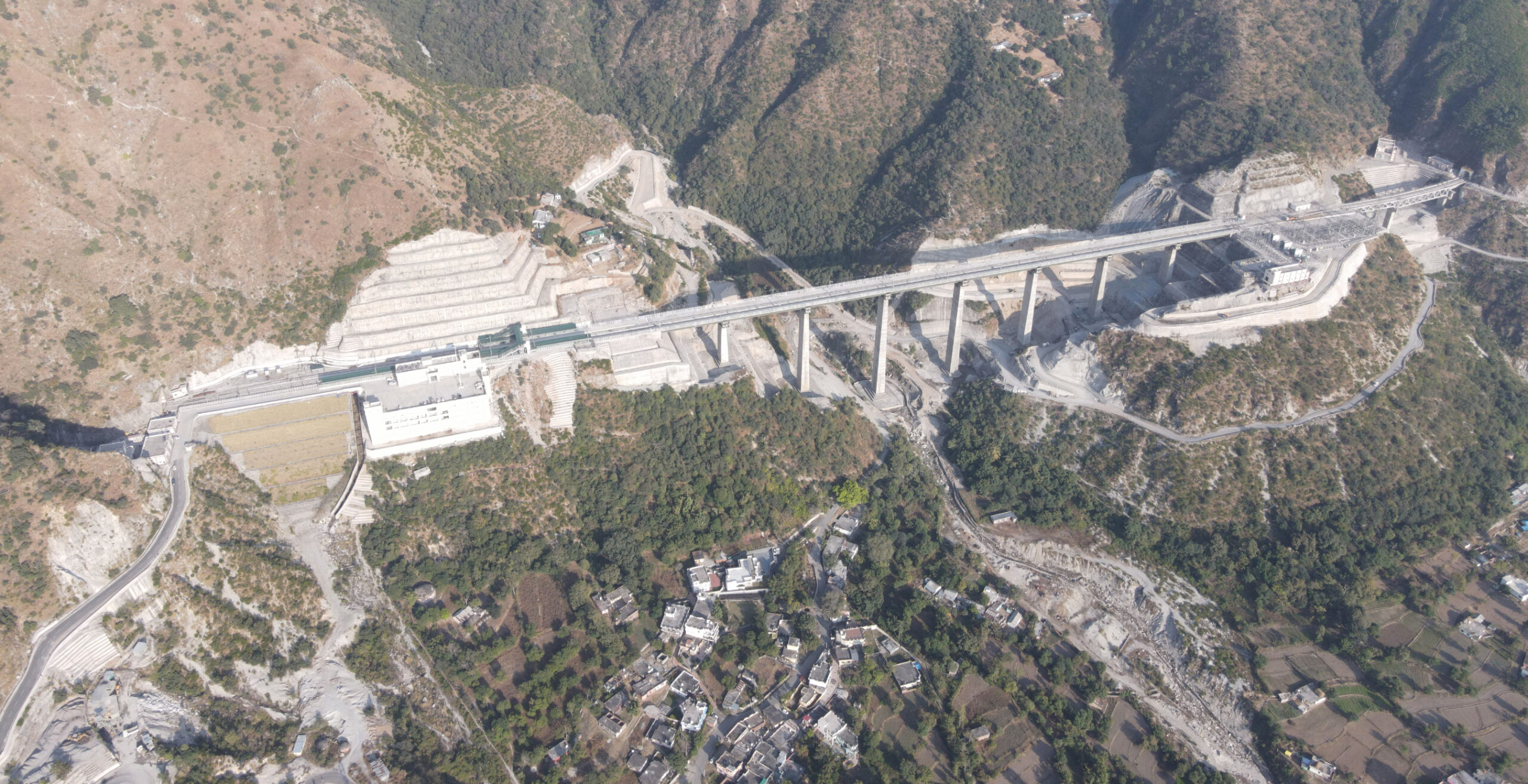
Reasi Railway Station
Nestled amidst the scenic beauty of Jammu and Kashmir’s Reasi district, the Reasi Railway Station on the USBRL’s Katra-Banihal section is far from any other on Indian Railways. It is divided into two distinct parts—one portion of the station is situated within a rail tunnel, while the other section is perched at a height of 193 metre above on a railway bridge.
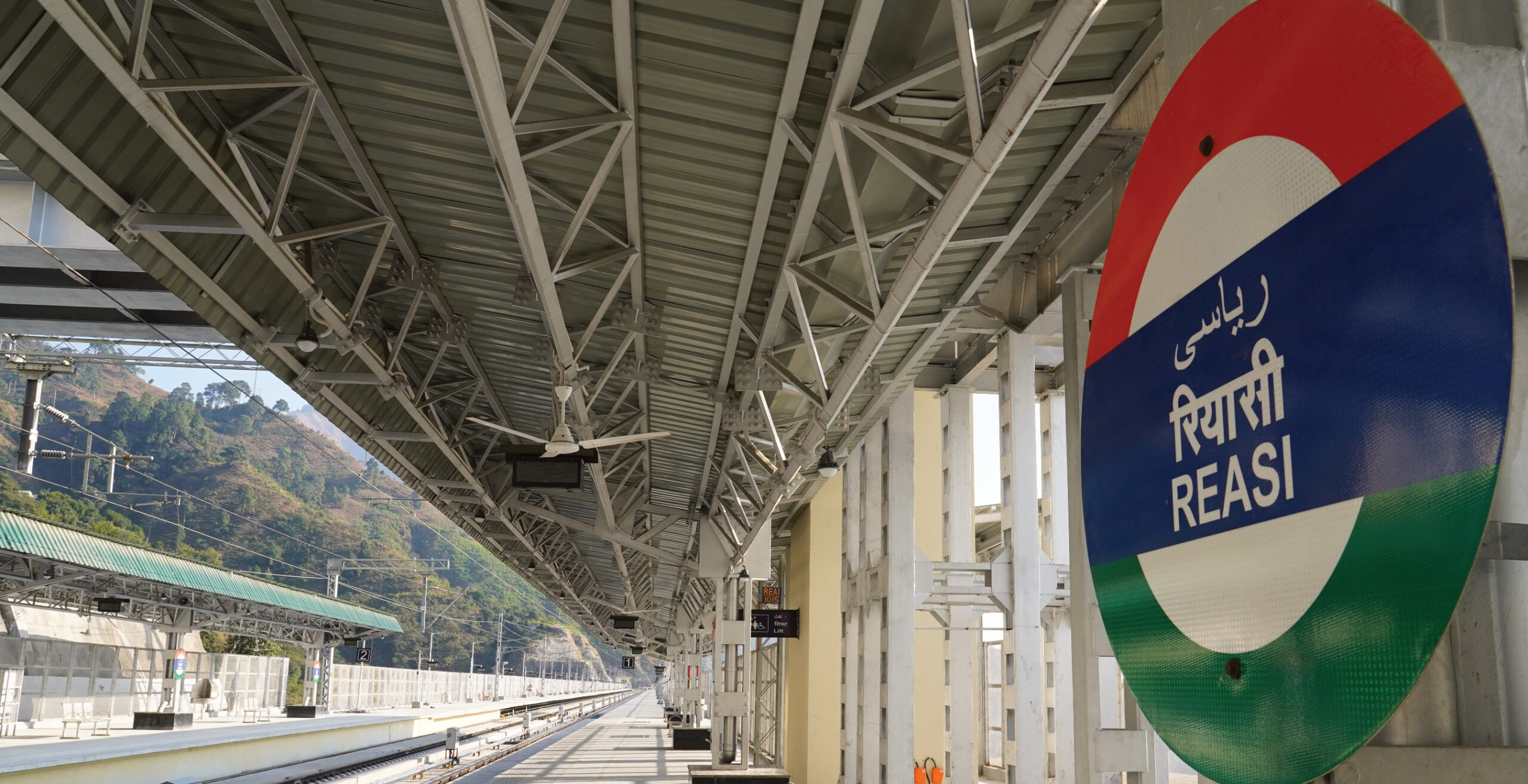
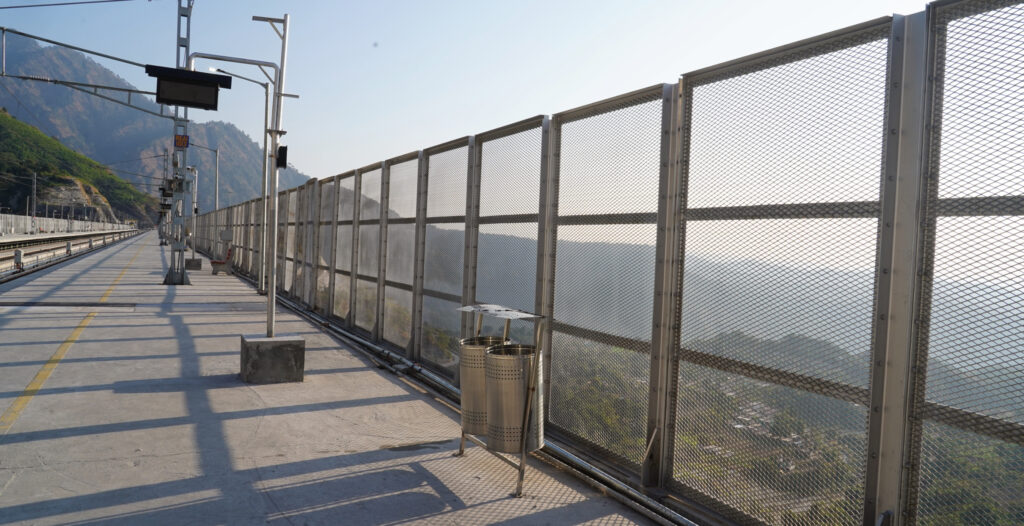
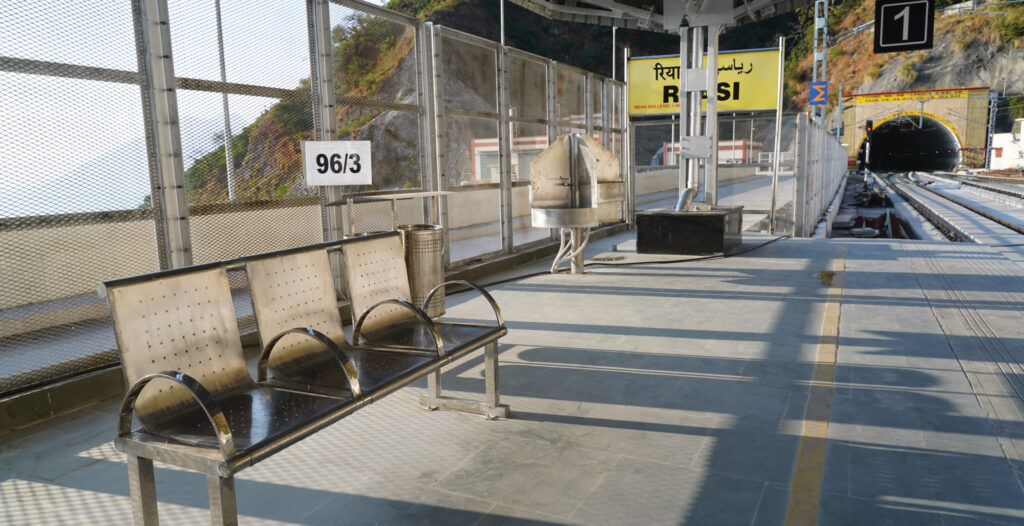
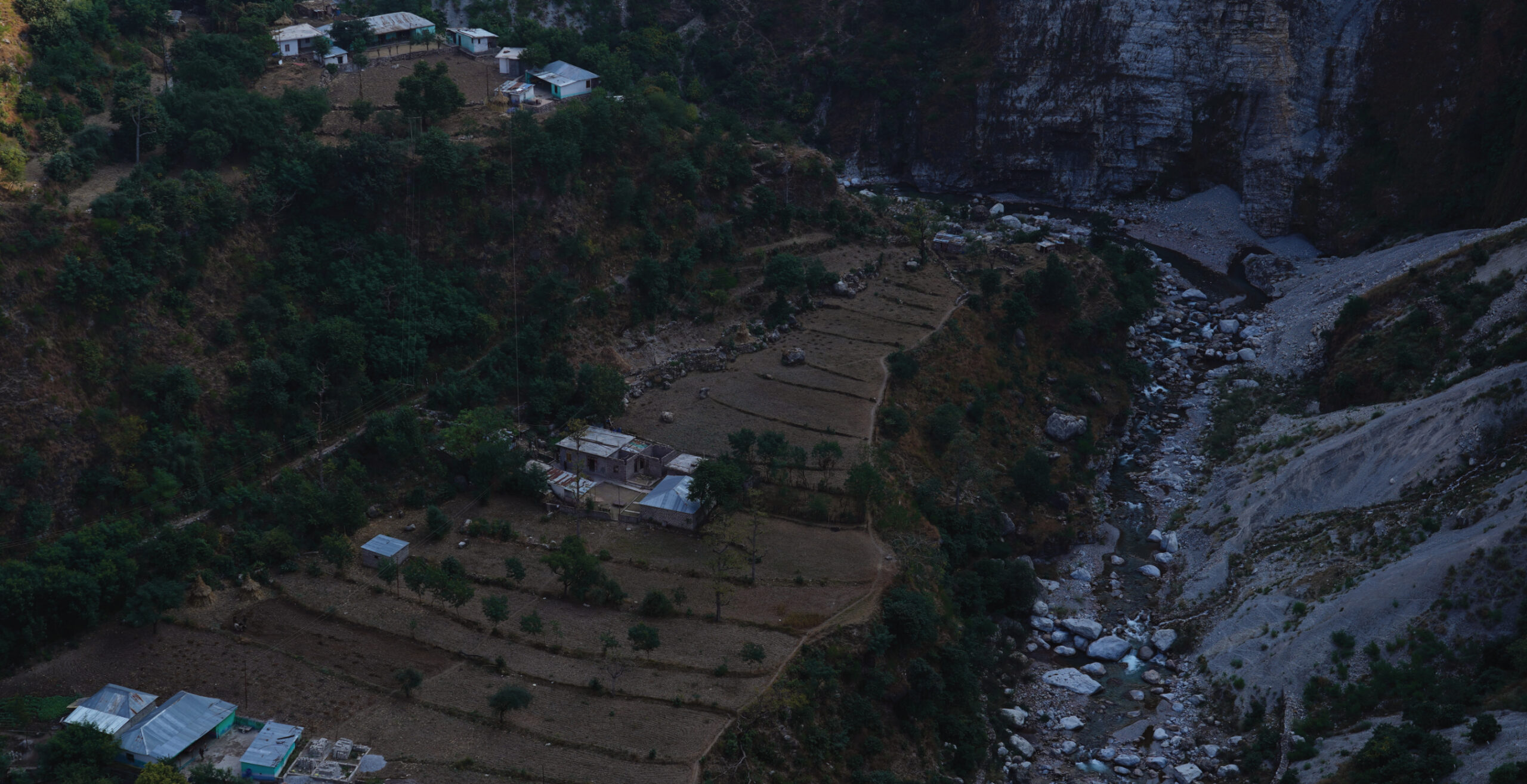
Bringing People Together
The Konkan Railway, Afcom Infrastructure and local workers sourced from the region toiled here for almost a decade with a passion for bringing life to these architectural marvels. Due to these two bridges and resources mobilised, the entire economic system of the area witnessed a sea change. For instance, the local hamlets living underneath the Anji Bridge saw the glow of electricity for the first time since independence. Many unsung stories are a part of it. With remaining gaps bridging soon the 111 Km Katra-Banihal section shall soon behold the Vande Bharat Sleeper traversing in full glory this year.
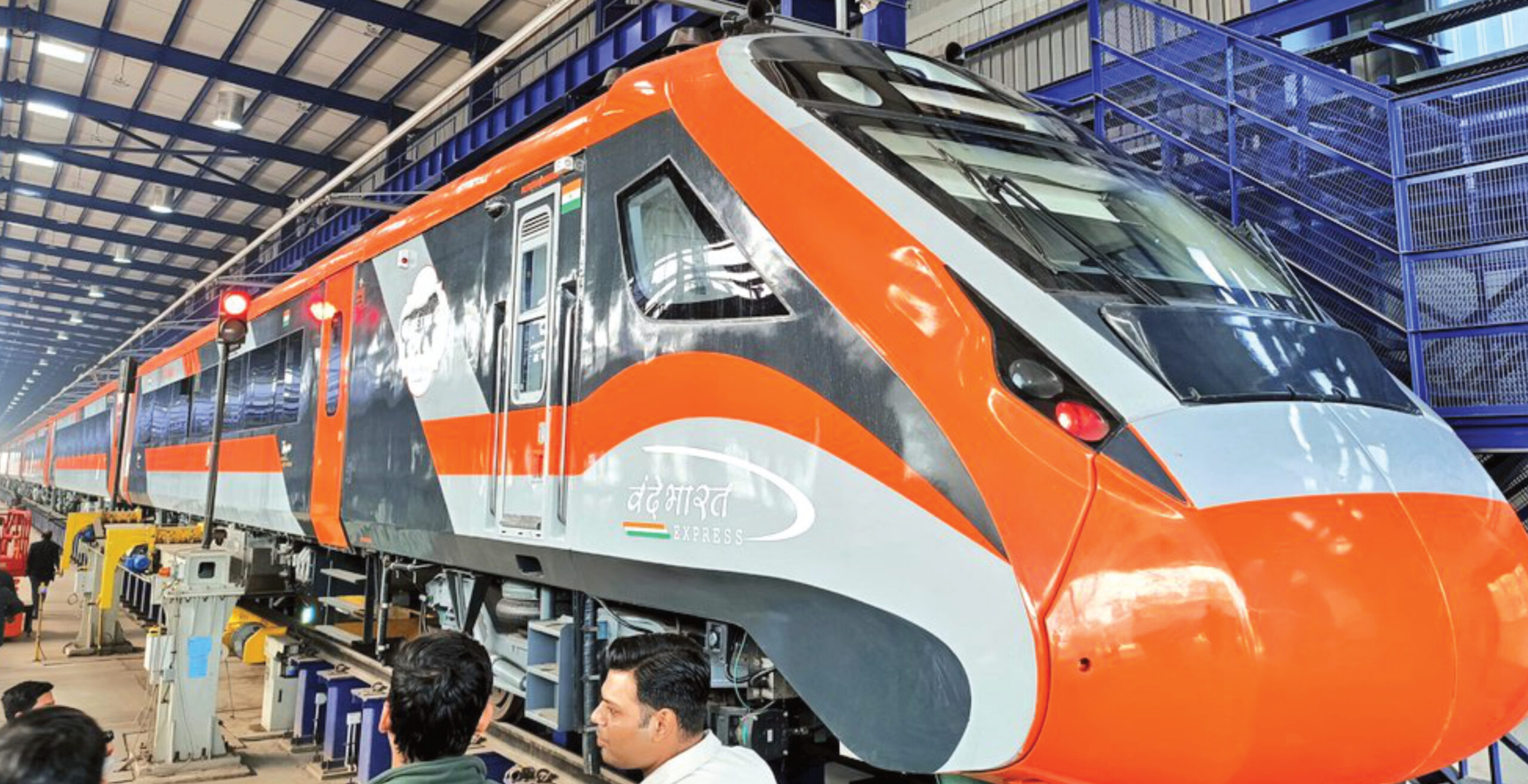
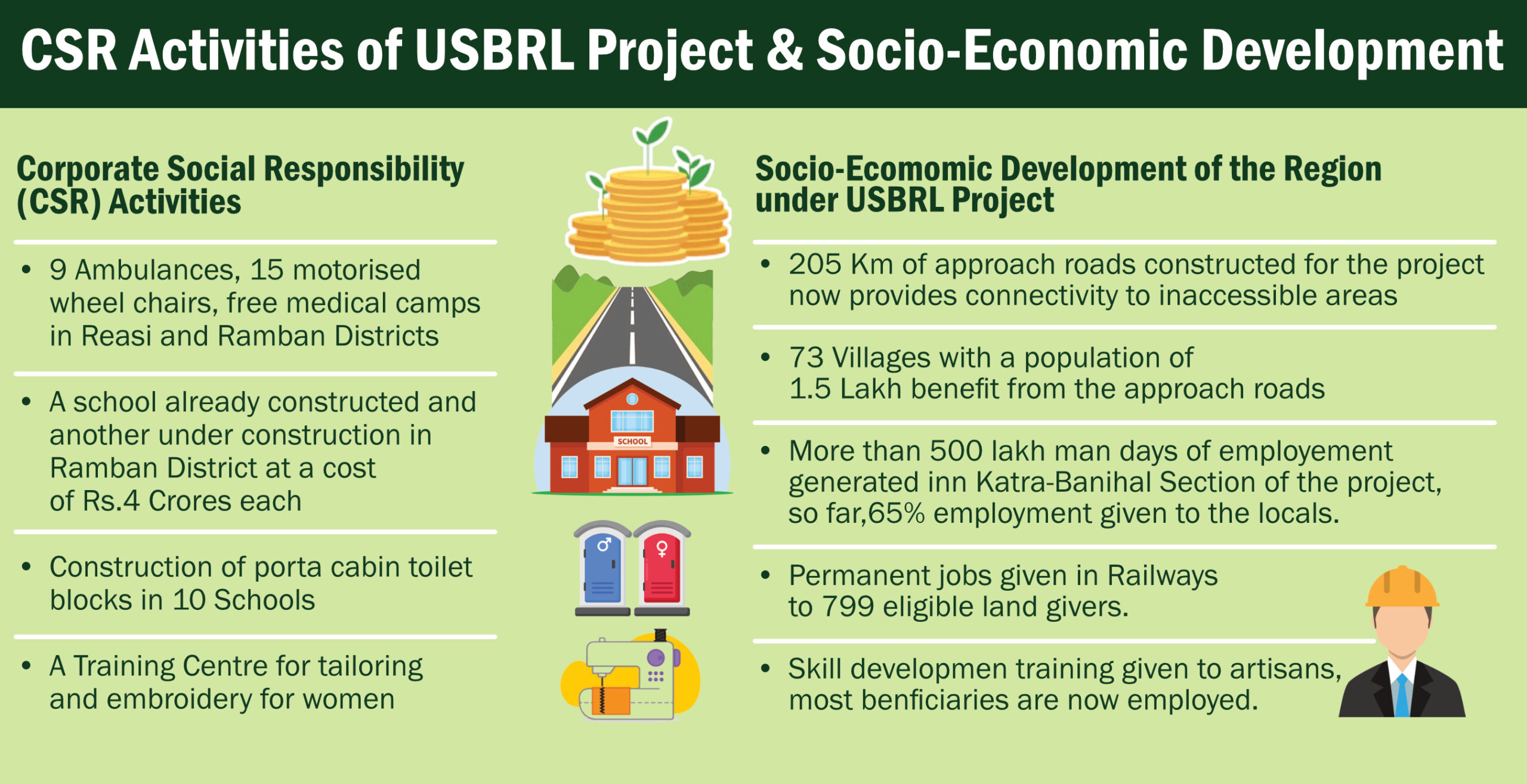
The Connectivity
Kashmir shall soon be easily accessible to the common man. People can stay connected with the region throughout the seasons through railways. Multiple avenues await to open up for business, goods, and cargo as these could be quickly dispatched to destined locations. Besides, the area awaits tourism influx and increased economic activity backed by the footfall. With the route being all weatherproof, the notion of seasonal tourism, especially during summer and rainy seasons, shall fade off.
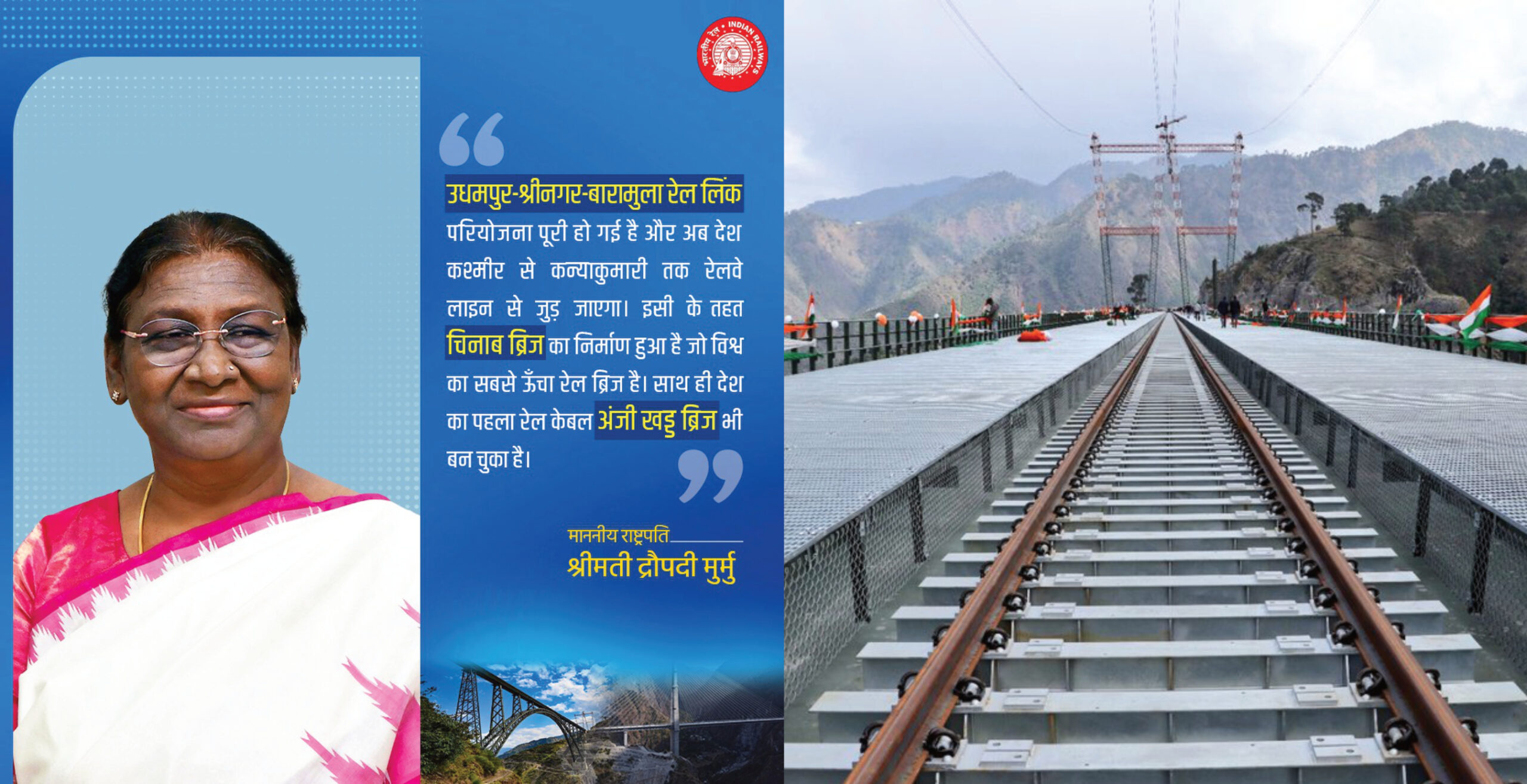
Nidhi Pandey Singh, Public Relations Officer, Northern Railway, told The Voices that while the Chenab Bridge is strategic for the connectivity of Jammu and Kashmir to the rest of the country, the Anji Bridge has brought light to the valley. The connection of Kashmir to the rest of the nation is just a few days ahead with the completion of the Commissioner of Railway Safety Inspection and trial run of Vande Bharat.
Copy Editor: Vishnu Sharmaa

